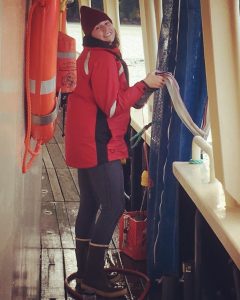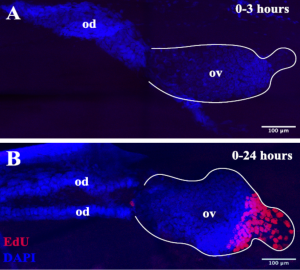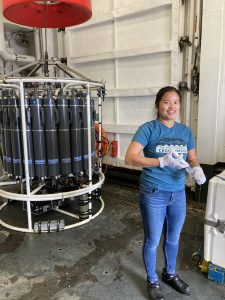Congratulations Kira Monell and Annie Kandel!

Kira is a master’s student in the Marine Biology Graduate Program at the University of Hawaiʻi at Mānoa. Her thesis is titled “Characterization of Cell Division in the Tissues of the Calanoid Copepod, Neocalanus flemingeri from Diapause through Early Oogenesis.”
During the summer and fall 2019 NGA LTER cruises, Kira collected diapausing female copepods. She examined lipid content and cell division within the reproductive structures. Through Kira’s work, she discovered that Neocalanus flemingeri can stop diapause and begin creating egg cells within just twenty-four hours after being collected.


Annie Kandel is a master’s student through the College of Fisheries and Ocean Sciences at the University of Alaska, Fairbanks. For Annie’s thesis, titled “Spatial and temporal variability of dissolved aluminum and manganese in surface waters of the northern Gulf of Alaska,” Annie investigated the seasonal variability of dissolved aluminum and dissolved manganese in our study area. Annie derived data from the spring, summer, and fall NGA LTER cruises in 2018 and 2019.
Annie’s work showed that dissolved aluminum and manganese are trace metals that can be used as tracers of freshwater input in the NGA. This is because in this region, their main source is from rivers. Values for both metals are highest inshore, closer to the mouth of the Copper River, and decrease moving offshore.

